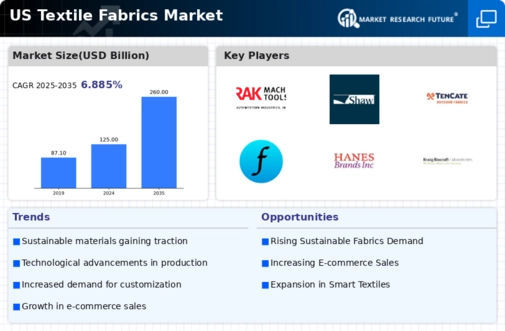The competitive landscape of the US Textile Fabrics Market has undergone significant changes in recent years, driven by technological advancements, shifting consumer preferences, and increased demand for sustainable materials. Companies are vying for market share in an environment that emphasizes innovation, quality, and responsiveness to customer needs. The market comprises a wide range of players from small niche manufacturers to larger corporations, all working to differentiate their offerings through eco-friendly practices, advanced manufacturing techniques, and customization options.
Factors such as globalization, regulatory changes, and fluctuating raw material prices add to the complexity of this competitive arena, requiring companies to continuously adapt and innovate to maintain their competitive edge.Southwestern Industries commands a respectable position in the US Textile Fabrics Market through its commitment to quality and innovation. The company has built a strong reputation for providing durable and high-performance textiles that cater to various end-use applications, including apparel, industrial, and commercial uses.
A key strength lies in its investment in technology, which allows for efficient production processes and the development of unique fabric solutions that meet specific customer needs. Furthermore, Southwestern Industries has established strategic partnerships with suppliers and distributors, enhancing its market presence while ensuring timely delivery and service excellence to its clients. This proactive approach, combined with a focus on sustainability and innovative practices, has positioned Southwestern Industries as a competitive force in the industry.Shaw Industries has made a significant mark in the US Textile Fabrics Market, particularly known for its expertise in manufacturing flooring, carpets, and other textile-based products.
The company's commitment to sustainability is evidenced by its extensive range of eco-friendly products designed to minimize environmental impact. Shaw Industries boasts a robust distribution network and well-established relationships with retailers and other partners, enhancing its presence across various market segments. Its strengths include a diverse product portfolio that encompasses both residential and commercial applications, alongside a focus on innovation, which has led to the introduction of several patented technologies in textile fabrication. The company actively engages in mergers and acquisitions to bolster its market position, consolidating its capabilities and expanding its reach within the US.
Through these strategies, Shaw Industries continues to maintain its leadership role in the market and adapt to evolving consumer preferences.





















Leave a Comment